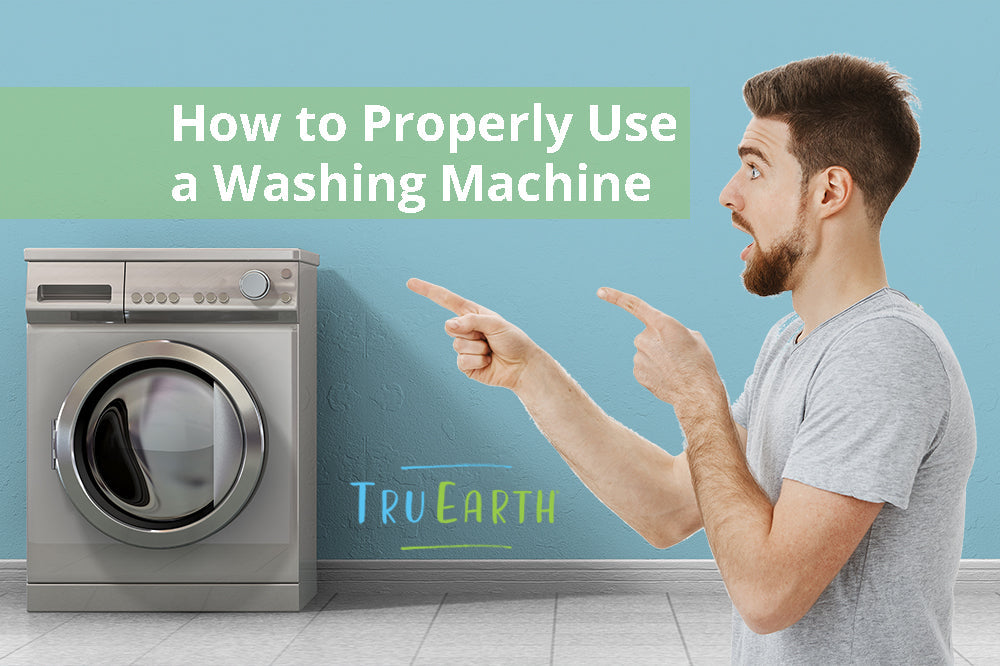Mens zijn betekent de taak van de was op je nemen. Gelukkig heeft de komst van de eerste elektrische wasmachines eind jaren 30 de tijd die we besteden aan het wassen van kleding drastisch verminderd. Met een draaiknop en een druk op de knop lijkt het wel magie; kleding gaat er vuil in en komt er schoon uit, zonder enige inspanning van de gebruiker. Toch zijn er een paar goede tips om te volgen. Hier leest u hoe u een wasmachine correct gebruikt en veelvoorkomende fouten vermijdt.
De basisstappen voor het wassen in een wasmachine:
- Sorteer je vuile kleding . Scheid eerst de witte was van de bonte was en verwijder delicate items. Sorteer ze in een soort wasmand. Als je niet zeker weet hoe een kledingstuk gewassen moet worden, controleer dan het waslabel. Klik hier voor een handleiding voorhet ontcijferen van wassymbolen .
- Vul de trommel . Let er vooral op dat u de wasmachine niet te vol laadt. Kleding heeft voldoende ruimte nodig om te "bewegen" en ook om te spoelen. Een overbeladen machine zal niet optimaal reinigen of spoelen. Bovendien kan wasgoed dat niet goed gespoeld is een schuimlaagje achterlaten dat vuil aantrekt. Grote wasbeurten zouden slechts 75 procent van de trommel moeten gebruiken.
- Voeg wasmiddel toe . Tru Earth eco-strips voor wasmiddel maken afmeten een fluitje van een cent. Scheur een vierkantje doormidden en gooi het in een volle was. Voor een halve was gebruikt u de helft van één strip. Makkelijk!
- Selecteer het juiste programma . Moderne wasmachines hebben doorgaans de volgende programma's: normaal, intensief, beddengoed/handdoeken, snelwas, fijne was, permanent persen en spoelen & centrifugeren. Wasprogramma's verschillen op twee manieren en dat heeft alles te maken met de snelheid: de snelheid waarmee de machine de kleding in het sop beweegt en de snelheid van de trommel tijdens het centrifugeren van het spoelwater. Hoe weet u welke u moet kiezen? Raadpleeg het waslabel van het kledingstuk om te zien welk programma de stof het beste beschermt en tegelijkertijd zorgt voor een goede reiniging.
- Pas de watertemperatuur indien nodig aan . Bij sommige programma's is het mogelijk om individuele instellingen aan te passen, zoals de watertemperatuur. Zeer vuile kledingstukken moeten worden gewassen op de hoogste temperatuur die geschikt is voor het type stof, voor een optimale reiniging. Heet water reinigt bacteriën beter en bestrijdt geurtjes. Sommige materialen (zoals handdoeken en sokken) zijn geschikt voor hoge temperaturen, terwijl andere beter presteren op lagere temperaturen (zoals bamboe en zijde) dankzij het afgeven van kleurstoffen en krimp. Donkere kleuren, permanent persen en normale was kunnen worden gewassen met warm water in plaats van heet water, wat energie bespaart.
- Pas indien nodig andere instellingen aan.
- Sluit de deur en druk op “start ”.
Waarvoor dient de permanente persinstelling?
Permanent Press verwijst naar een zachter wasprogramma dat kreukvorming in kreukgevoelige stoffen kan helpen verminderen. (Sommige wasmachines noemen dit simpelweg "kreukpreventie".) Het werkt door te wassen (roeren) in warm water en op een lagere snelheid te centrifugeren om kreukels te verwijderen. Vergeet niet om de kledingstukken direct na afloop van het programma uit de wasmachine te halen. Let op: permanent press mag niet worden gebruikt in plaats van het programma voor fijne was; gebruik het programma voor fijne was wanneer het waslabel dit voorschrijft.
Veelgemaakte fouten bij het gebruik van een wasmachine:
- Te lang wachten met het uitladen van de was nadat de wascyclus is voltooid. Nat wasgoed urenlang laten liggen, resulteert vaak in een geur die niet weggaat, zelfs niet als het droog is, waardoor een extra wascyclus nodig is – en dat is zonde. Het draagt ook bij aan de vorming van schimmel in de trommel.
- Laat de deur van de wasmachine gesloten wanneer deze niet in gebruik is . Houd deze open om schimmelvorming te verminderen.
- Te veel wasmiddel gebruiken . Wasmachines rekenen erop dat items elkaar tijdens de wascyclus in beweging brengen. Overmatig schuim vermindert de wrijving van die interacties, wat resulteert in een minder effectieve reiniging. Bovendien meten de sensoren van de huidige "slimme" apparaten constant de water- en schuimniveaus. Te veel zeep kan een extra spoeling vereisen, waardoor onnodig liters water worden verspild en het energieverbruik toeneemt.
- Vergeten zakken te legen . Het niet legen van zakken kan resulteren in papierkruimels of klodders natte tissues. Erger nog, kleine harde voorwerpen zoals munten kunnen schade aan het apparaat en de stoffen veroorzaken.
-
Verwaarlozing van het onderhoud van uw wasmachine . Mensen vergeten vaak dingen schoon te maken die andere dingen schoonmaken, zoals een wasmachine. Als uw apparaat een zelfreinigende functie heeft, gebruik dan zo nu en dan de zelfreinigende modus om schimmel, meeldauw, hardnekkige aanslag en zeepresten te bestrijden.
Hoe kiest u het juiste wasmiddel?
De moderne, zeer efficiënte wasmachines vereisen zeep met de juiste samenstelling. De eco-strips van Tru Earth wasmiddel zijn HE-compatibel, zoals aangegeven door het pictogram op de papieren verpakking. Los van de samenstelling is Tru Earth hypoallergeen, parabenenvrij en geproduceerd in Canada, waar het aan strenge gezondheidsvoorschriften voldoet. En met elke wasbeurt bespaart u een plastic fles op de afvalberg.
Gratis verzending*


